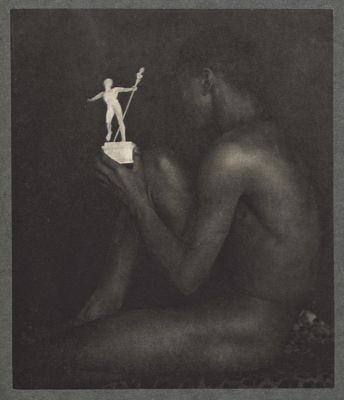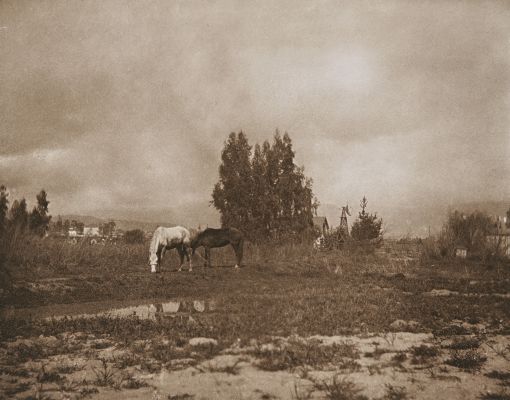
Title
Study in RedArtist
Demachy, Robert (French, 1859-1936)Publication
Camera Notes Vol. 2 No. 1Date
1898Process
PhotogravureAtelier
Walter L. Colls, LondonImage Size
16.5 x 12.5 cm
Demachy’s Study in Red was seen in an early issue of Camera Notes as a photogravure frontispiece. Looking like a cross between a watercolor and a chalk drawing, the image reveals both technical skill and artistic intent. Demachy utilized the gum-bichromate process for the original image, which allowed him to remove by hand all background detail and introduce a dynamic fluid foreground. Printed in a conte-crayon color ink simulating sanguine chalk, the image celebrates the beauty of the female subject as well as the richness of both the gum-bichromate and the photogravure process. [1]
While Demachy strongly favored subjects taken in their natural environments, he occasionally sought to completely control content, making pictures in the studio, using posed, costumed models. In this one he appears to have created a pastiche of an academic drawing. However, academic drawings rarely have the casual fidelity to nature so evident here. No matter how much this print of 1898 resembles a drawing, there is the haunting image of a real person, not an artist’s flight of fancy. Here Demachy has introduced an element of ambiguity: he invites us to ask ourselves, "Is this really a photograph?," when we know all the while the answer is "yes." [2]
Reproduced / Exhibited
Stieglitz, Alfred, Richard Whelan, and Sarah Greenough. Stieglitz on Photography: His Selected Essays and Notes. New York, NY: Aperture Foundation, 2000. p. 98
Doty, Robert M. Photo-secession: Photography As a Fine Art. N.Y: Eastman, 1960. p. 29.
References
[1] Peterson Christian A et al. Alfred Stieglitz’s Camera Notes. 1st ed. Published by the Minneapolis Institute of Arts in Association with W.W. Norton 1993. p. 28
[2] The Metropolitan Museum of Art Bulletin Spring 1978

